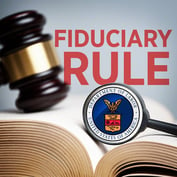The U.S. Office of Personnel Management is trying to keep the Patient Protection and Affordable Care Act from making members of Congress, their staff members and dependents uninsured.
PPACA will require members of Congress and congressional staff members to get their coverage from the PPACA public exchanges starting Jan. 1, but the law contains no provision authorizing the government to help members of Congress and their staff members pay for the coverage.
Some PPACA opponents have suggested that the people affected would have to pay the full cost of exchange coverage themselves.
Obama administration officials announced last week that they had come up with a regulatory fix for the looming coverage gap.
OPM officials now have filed draft coverage gap regulations.
In the draft, which is set to appear in the Federal Register Thursday, OPM officials say the federal law that authorizes the government to help pay for regular Federal Employees Health Benefits coverage for lawmakers and staff members refers to “health benefits plan under this chapter.”
In the past, OPM has never had to clarify the provision, but the agency will now say the provision applies to exchange plans, both for current members of Congress and staff members and for retirees, officials said.








 August 07, 2013 at 01:31 PM
August 07, 2013 at 01:31 PM









